
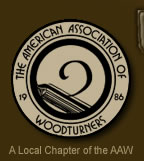
Serving Southeastern West Virginia
The West Virginia Woodturners Association provides woodturners in southeastern West Virginia and western Virginia with an opportunity to meet other turners, enhance their skills, and share their skills and interests in woodturning. Send an email to info@wvwoodturners.com to request additional information about the club and its activities.
Christmas Banquet: December 5
The Christmas Banquest will be held at The Fort at 6PM on Saturday, December 5. More information will be presented at the November meeting.
November 21 Meeting Highlights
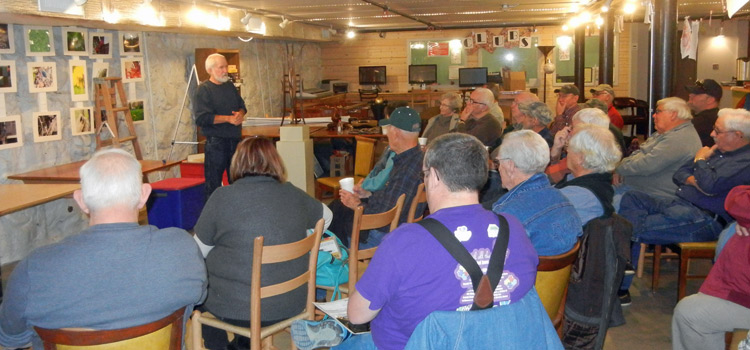
Twenty five members and one guest attended WVWA Annual Meeting on November 21 and enjoyed a slide show presentation by Fred Wiman on woodturning as an art form. Jim Myer also discussed how he designs and lays out segmented turning projects. As part of the Annual Meeting, the following officers and directors were elected to serve throughout 2016:
- President: Jerry Carter
- Vice President: Anna Stables
- Secretary: Bill Sproul
- Treasurer: Gerald Chandler
- Director: Wayne Aliff
- Director: Cliff Baker
- Director: Tim Green
- Director: Charlie Myers
- Director: Bob Nickell
Show and Tell will feature Christmas ornamnets that have been turned for the September Club Challenge.
Show and Tell
Club members displayed 8 of their recent turnings.
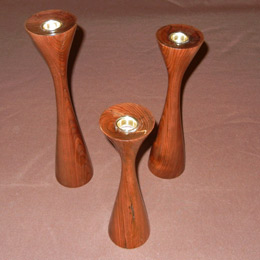
Bill Sproul turned this set of three cherry candlesticks.
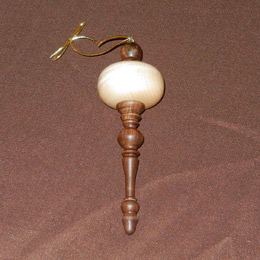
Gerald Chandler's walnut and maple Christmas ornament.
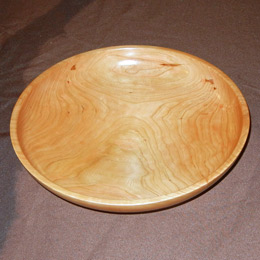
This 12" cherry platter was turned by Dan Greene.
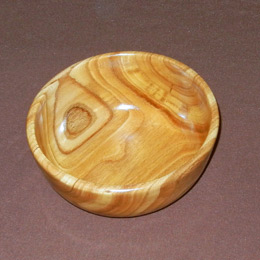
Dan also turned an 8" mimosa bowl.
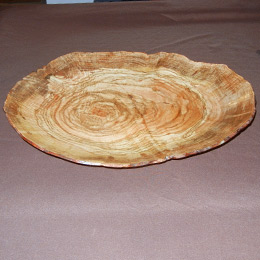
Mike Cope set the record for the largest turning - a 100 lb. red oak burl was transformed into a 25" footed tray.
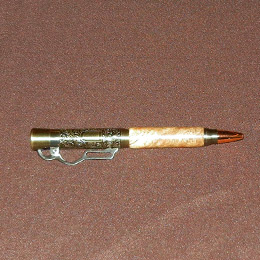
Tim Green created this red oak burl pen.
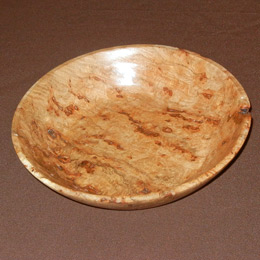
Fonzie Fitzwater also used red oak burl - he turned an attractive 11" bowl.
Fred Wiman: Wood Turning as an Art Form
Fred Wiman is a professional artist and WVWA Club member. He opens his website with the statement:
"Woodturning is both an art and a craft. Craftsmen produce vessels; artists make them interesting. The artwork [you see in this gallery] is based on turned wooden vessels. Turned vessels include bowls, vases, pots, platters--anything round and hollow, produced on a wood lathe."
Fred presented a slide show of many of his art turnings to illustrate his philosophy of design. He also provided us with tips for enhancing our own turnings and are shown in the following screen shots.
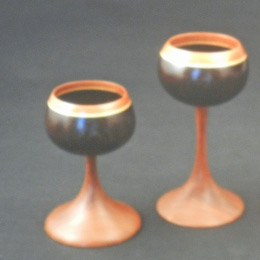
Turning provides instant gratification - unlike furniture, a turning can be completed in one session.
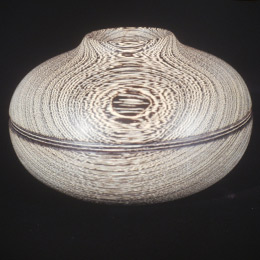
Design should emphasize either the wood or the form as illustrated with this bleached wenge bowl.
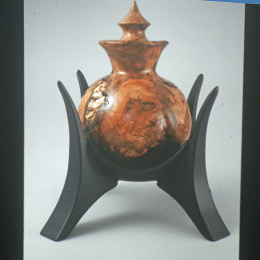
Lines and curves should flow throughout the entire piece.
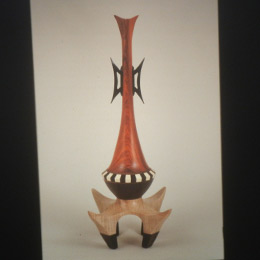
Collectors buy art. They ask themselves "Is this pleasing to look at?"
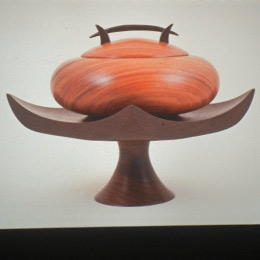
A stand draws attention to the turning.
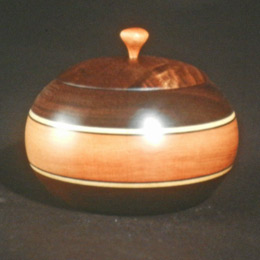
Banding can be used to separate woods of different tones.
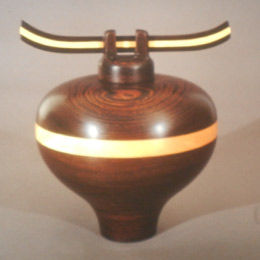
Handles are added after turning.
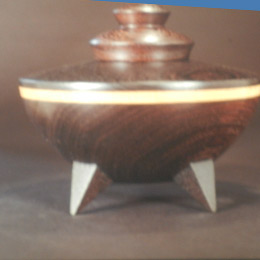
Feet are added and the wood and design complement the turning.
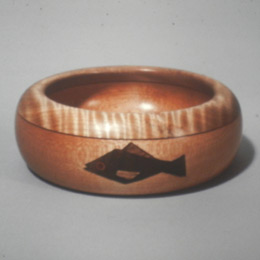
Inlays can enhance the design and appearance of the turning.
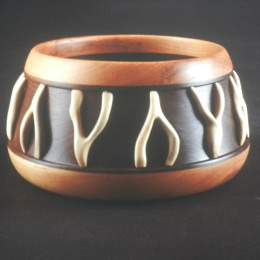
Overlays profice another design element.
Jim Myer: Creating segmented turnings
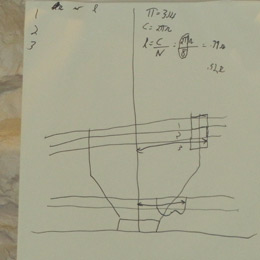
The design of a segmented turning begins by sketching the outer and inner profiles on graph paper, then adding evenly spaced horizontal lines to define each layer. Jim uses a sled on his table saw to precisely cut the individual segments. The angle is calculated by the formula angle = 180/# of segments. The length of each segment is calculated by multiplying twice the radius of each ring by pi (3.14) and dividing by the number of segments in the ring. The width of the segment in each ring is the difference between the inner and outer radius of each ring. The width must be large enough to allow for turning away all the excess material in each ring to leave a smooth transition between rings.
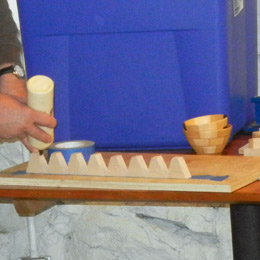
Original Titebond glue is used to form a ring from the individual segments using either of these techniques: Apply glue to the mating surfaces of 2 segments, rub them together, and lay them on a piece of waxed paper for several minutes while the glue sets. Pairs of segments are then glued together until a half ring is formed. The faces of two half-rings are sanded on a disc sander to ensure they flat and can be glued without a gap. The alternate method is to apply glue to the faces of each segment, lay them on a strip of masking tape, roll the strip of segments to form a ring, and clamp the ring with a band clamp. After the glue has cured overnight, the rings are surfaced with a drum sander after which the rings are glued and clamped together to create the turnoing blank.
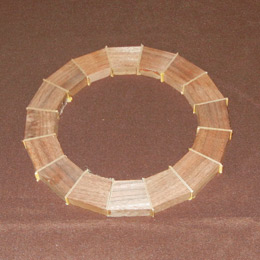
The ring has been surfaced with the drum sander.
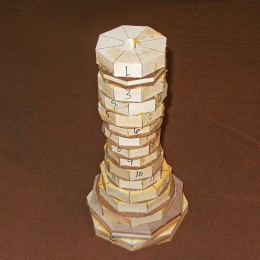
Rings are assembled to create the turning blank
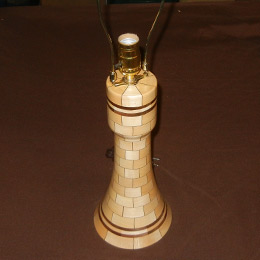
and the lamp base is completed.
General Club Information
For further information about any WVWA activity, call Bill Sproul at (304) 497-2319.
Supporting Companies
We would like to thank these companies for the support they have provided to the Club during the past year. Check out their websites when you are ready to purchase products that they stock.
Craft Supplies USA is a one-stop shopping site for everything a wood turner might need or want - lathes, tools, accessories, project supplies, materials, and more.
Woodcraft offers a 10% discount at the Roanoke store to WVWA members when they show a current membership card.
by WVWA, a chapter of the American Association of Woodturners